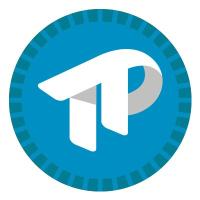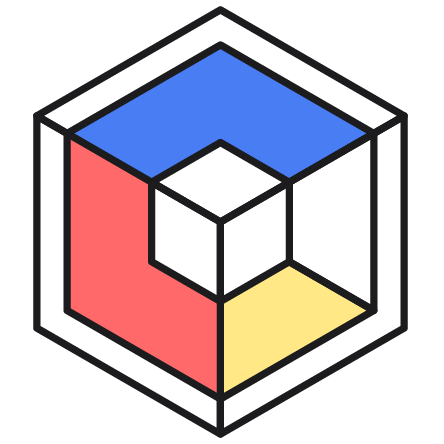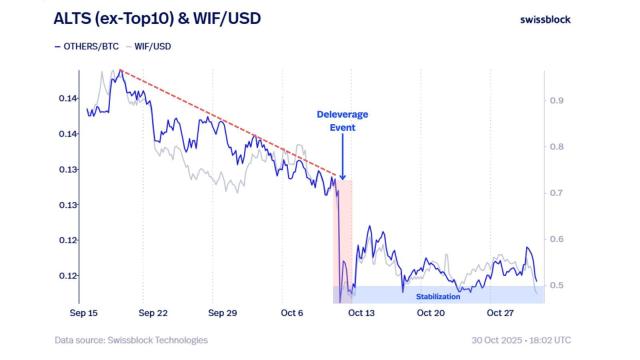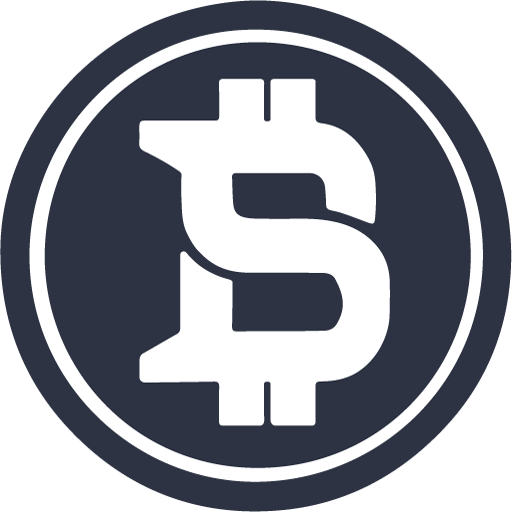Hello. It's time for a deep dive into the world of digital assets with our listeners. Today, we'll be taking a closer look at the performance of The Sandbox, a metaverse platform that's been attracting a lot of attention. We'll be analyzing the key insights from a report released by Mesari Research , so you can quickly grasp key trends within this complex ecosystem. The core question of this analysis is this: While activity within The Sandbox appears to be very active, why has the price of its main asset, the SAND token, remained somewhat weak? Focusing on this intriguing gap, we'll delve into what happened within The Sandbox in Q2 2025 and what this means for you. Let's get started. First, let's briefly review what The Sandbox is. It's a platform where users create games and various experiences.
00:58
And within that, you can own assets and even generate revenue, right? It's a kind of social gaming metaverse. The key is that it uses Web3 technology, specifically NFTs, to return true ownership of digital assets to users. That's right. It's important to understand the core elements that make up this ecosystem. First, there's the Sand Token. It's an Ethereum-based ERC20 standard token. It serves as the base currency for transactions, staking, and governance participation within the platform. The total supply is fixed at 3 billion. Next, there's Land. This is an ERC, Ziel standard, or NFT. It's virtual real estate. Each Land is unique, and users can build their own experiences on top of it. Multiple Lands can be combined to create larger spatial estates.
01:55
3D items created by users themselves are called assets. These follow the ERC 1 standard, allowing multiple copies of a single design, making them ideal for game items. Finally, the user's avatar, AVTARS, also exists as an ERC 721 NFT. Users can design these assets or avatars using a tool called Boksetit, and use a tool called Game Maker to create experiences like games and social hubs on the land without coding. All of these elements are organically connected and functioning. Yes, thank you for the explanation of the basic components. It's quite clear. Now, let's take a closer look at the second quarter 2025 performance. As I mentioned briefly earlier, it seems to have a somewhat lively and somewhat subdued appearance on the surface. How was the overall secondary market trading volume?
02:54
Yes, that's an interesting point. The total secondary trading volume on The Sandbox Marketplace in Q2 was approximately $850,000, or $851,091 to be exact. That's a 10.9% increase compared to Q1. Oh, it's increased. Yes. So, the overall cryptocurrency market sentiment was a bit gloomy. Despite this, demand for asset trading within the platform didn't decrease, but rather increased. This could be seen as a positive sign. Oh, so the trading volume itself increased. But you mentioned that if you look at it more closely, there's a different pattern. What is that? Yes. This is the core of this quarter's analysis. The increase in trading volume was primarily due to the increased trading activity of assets other than LAND, that is, non-LAND assets.
03:45
Secondary sales of NON-LAND assets, such as assets and avatars, reached approximately $118,000 and $117,726, a whopping 52.1% increase compared to the previous quarter. 52.1%. And yes, it's not just the transaction volume that increased, but the number of people actually participating in purchases also increased significantly. The average daily active buyer of NON-LAND assets reached 264.7, a 78.2% increase from the previous quarter. Wow, that's a 50% increase in transaction volume, but a nearly 80% increase in the number of buyers. This is truly remarkable growth. Is there a specific reason why non-LAND assets have performed so well? I wonder if this is a temporary phenomenon or a sign that The Sandbucks' center of gravity is shifting. This is a very important question.
04:38
The biggest drivers of NONLAND's growth were the large-scale event Alpha Season Five and the formation of new partnerships. Collaborations with renowned IPs were particularly effective. I'll delve into this in more detail later. On the other hand, secondary sales of LAND, The Sandbox's core asset and traditional center of transactions, decreased slightly by 4.4% quarter-over-quarter to approximately $733,000 and $733,244, respectively. Land transactions actually decreased, which is a bit surprising. It's true that LAND is the main driver of growth so far. However, given the rapid growth of NONLAND assets, this proportion could change in the long term. I think so. You're right. While LAND still represents the largest portion of The Sandbox's economy, the role of NONLAND assets is becoming more prominent in terms of growth drivers. This is a distinct feature of this quarter.
05:36
While the overall increase in transaction volume is positive, the specifics are somewhat different from the past. This could indicate a strategic direction for The Sandbox, moving beyond a simple virtual real estate investment platform to a sort of experience-centered metaverse where real users can enjoy and interact. Of course, we'll have to wait and see whether this is a sustainable change. Yes, that means NONLAND asset transactions could surge and then decline depending on the popularity of events or specific content. It'll take some time to determine sustainability. Let's delve into Alpha Season Five, the core driving force behind the success. You mentioned the collaboration with Jurassic World and Jurassic World. Yes, Alpha Season is a large-scale play event that The Sandbox regularly hosts. Season Five, in particular, was a huge success factor in its partnership with Universal Pictures, which showcased Jurassic World-themed content.
06:33
According to internal data from The Sandbox, 53% of Alpha Season 5 participants were new players accessing the platform for the first time. More than half were new users. Yes, 47% were returning users. The average session time per user, or the time spent on a single session, reached a whopping 97 minutes, demonstrating that users were highly engaged with the content. That's almost an hour and a half. Wow, that's incredible engagement. It also contributed significantly to the influx of new users. What content was particularly popular? Jurassic World Dinosub Preserve and Jurassic World Dinosub Preserve, with approximately 60,000 users, were the most popular content of the season. What's notable about this experience is the seamless connection between gameplay and NFTs. We sold NFTs called the Jurassic World Dinosaur Egg Collection and Jurassic World Dinosaur Egg Collection.
07:29
Players first purchase these RNFTs. Then, by completing certain quests in the game, they can hatch these Rs and transform them into adult dinosaur NFTs. So, it's not just about purchasing NFTs; they can also evolve them into more valuable NFTs through gameplay. Exactly. So you're saying this directly influenced the increase in NONLAND asset purchases? Yes, that's right. To obtain public NFTs, users had to first purchase egg NFTs and actively participate in in-game activities. This process naturally led to the active trading of NONLAND assets. In fact, over 20,000 NFT items called "Jungle Category Keys," required for completing in-game quests, were reportedly exchanged, giving us a sense of the excitement. This is an example of the successful operation of this gamified NFT acquisition model.
08:28
Certainly, it's a combination of a strong IP and well-designed game mechanics. There's a synergy there. Hmm. Were there any notable events related to land sales? While transactions decreased slightly on the secondary market, I'm curious about the first round of sales. Yes, there was also a first round of land sales in the second quarter. It was called the Adventure World: The Wildlands Land Sale. This sale generated approximately $29,000 and $29,395 in revenue. This sale attracted a lot of attention because, in addition to the aforementioned Jurassic World, it also featured some very famous and somewhat unexpected IPs like the Bruce Lee Foundation and the British Museum. Wow, that's a really interesting combination. How was the sales process? There were two different sales processes.
09:22
One was a public land auction using the unique bid-to-one auction model of the auction platform called GBM. The other was a general public sale through The Sandbox website. It included lands ranging from basic 1x1 sizes to estates in 3x3 and 6x6 sizes. What exactly is a bid-to-one auction model? It's a bit unfamiliar. This method is interesting. In a typical auction, only the highest bidder wins, and the rest go home empty-handed. Yes, that's right. However, the bid-to-one model provides a certain amount of compensation for the bidding activity of bidders who don't win, a kind of participation reward. The goal is to encourage more people to participate in the auction and reduce the negative experience of those who don't win.
10:15
Additionally, in this sale, LAND buyers received not only digital items but also physical rewards for joining the IP neighborhood. This encourages community building. Incentivizing participation in the auction itself can certainly increase participation. So, internally, the platform has seen a lot of activity, including the success of Alpha Season 5 and the sale of new LANDs. Now, let's return to the original question: why, despite this vibrant ecosystem, has the price of SAND tokens itself been weak? Yes, that's what many of you are curious about. Unfortunately, the SAND token price continued to decline throughout the second quarter. At the end of the second quarter, SAND closed at $0.28, a 33.1% drop from its price of $0.42 at the end of the first quarter.
11:09
The market capitalization, which represents the total value of SAND tokens in circulation, also decreased by 11.0% from $661.7 million at the end of the first quarter to $588.6 million . While it briefly reached a quarterly high on May 10th, it failed to reverse the overall downward trend. A 33% drop is quite significant, and it's in stark contrast to platform activity indicators. What do you think is behind this price decline? Is it due to internal factors within The Sandbox, or is it due to macro market conditions? It seems likely that a combination of factors was at play. First, the overall cryptocurrency market was somewhat bearish in the second quarter of 2025. Major assets like Bitcoin and Ethereum also struggled, so SAND was unlikely to be immune to this macro trend. However, internal factors cannot be ignored.
12:08
It's possible that changes related to the utility of the SAND token, specifically the staking policy, have had an impact. Ah, staking. Could you elaborate on staking activity? As of the end of Q2, as of June 30, 2025, only about 0.52% of the circulating SAND supply was staked. Specifically, about 42.1 million SAND. This is a significant decrease from the staking rate of 0.76% (about 54.5 million SAND) at the end of Q1. The participation rate itself was extremely low, and even that was declining. Yes, that's right. The staking participation rate itself wasn't high. What's interesting, however, is who primarily staked. The data shows that non-LAND asset owners were more active in staking than LAND owners. Approximately 60.8% of all staked SAND came from the non-LAND owner pool.
13:08
The land owner pool had approximately 12.2 million sand staked, and the non-land owner pool had approximately 18.9 million sand staked. With a staking rate of less than 1% and steadily declining, staking probably wasn't that attractive for token holders. But there was a more significant change? Yes, this is the key point. In June 2025, The Sandbox team announced that they would shut down all existing sand staking pools and discontinue the related rewards program. They also asked all stakers to withdraw their funds. In other words, one of the key mechanisms for earning rewards like interest by staking sand was completely eliminated. They simply terminated the staking program. This is a significant decision. Why do you think this decision was made? And does it have anything to do with the decline in the sand price? While the official reason hasn't been clearly revealed, there are some speculations.
14:06
First, if SAND continues to be released as staking rewards, inflationary pressures on the token will increase. This could be an attempt to alleviate this. Second, it could be a strategic decision to focus more on other utilities of the SAND token, such as in-game spending or governance participation, rather than staking, which has shown low participation rates. Third, there could be a simple desire to reduce operational complexity. While this decision cannot be said to be the sole cause of the price drop, it's entirely possible that the disappearance of staking rewards, a key reason to hold SAND tokens, has led to selling pressure. While this may be disappointing for long-term holders, it could also have had another effect on the health of the token economy. While staking may have a negative impact on the price in the short term, it could be intended to stabilize the token economy or highlight other uses in the long term. That's what you're saying.
15:04
How this change will impact the value of the SAND token going forward will be an important point to keep an eye on. Now, let's take a look at community governance, or the activities of the DAO decentralized autonomous organization. How is the community participating in determining the direction of the ecosystem? In Q2, two important proposals, or SIPs, were put to a community vote. The first was SIP No. 25. This proposed establishing an official grant program, SDGP (The Sandbox DAO Grant Program), to systematically support builders, creators, and various community-led projects within The Sandbox ecosystem. Ah, so a grant program provides financial support to those who contribute to the development of the ecosystem. That's right.
15:55
The idea was to create a formal channel for financial support for activities like creating compelling game experiences, useful development tools, or organizing cultural programs to stimulate the community. This could play a crucial role in stimulating the voluntary contributions of the community and fostering ecosystem growth. The second proposal was SIP-29. This proposed funding for an offline celebration event for the winners of the Impact Game Jam, a community-hosted game development competition. An offline event? Yes. The idea was to go beyond just online activities and provide some real-world recognition to the winning developers and their projects. It's an attempt to connect creative activities in the virtual world with real-world recognition.
16:48
Both proposals seem like very positive steps toward revitalizing the ecosystem and rewarding contributors. The fact that these proposals are being voted on by the community itself is proof that the DAO is actually working. Indeed, these DAO activities are an important indicator that The Sandbox is moving beyond being a platform operated by a centralized company to a decentralized ecosystem built by community members. Although the price of sand has been somewhat weak, community-level development efforts are continuing. So, we've looked at various aspects of The Sandbox in Q2 2025. Let's summarize them comprehensively. Could you summarize the key findings of this quarter? Q2 2025 was a period of mixed signals for The Sandbox. I think it can be summarized like this.
17:43
On the one hand, the token's own metrics showed some weakness, with the SAND token price dropping by over 33%, staking participation declining, and the program ultimately ending. However, on the other hand, activity within the platform increased or remained stable. Specifically, overall secondary transaction volume increased by 10.9%. In particular, compelling content like Alpha Season Five and IP collaborations led to an explosive increase in transaction volume for NONLAND assets (up 52.1% and 78.2%, respectively). This was impressive, demonstrating the successful implementation of experience-driven user engagement. On the other hand, secondary transactions for LAND, a traditional core asset, decreased slightly, and primary sales revenue was modest. The termination of the SAND staking program was a decisive event that could significantly impact future token utility and holder behavior.
18:42
Yes, you've summarized it very well. In summary, while the external indicator of the token price was sluggish, the activity indicators of actual users enjoying, creating, and trading within the platform were solid or even growing. This growth was driven by non-LAND assets and special events, rather than LAND. Finally, there was a significant change in token policy, the end of staking. These three key factors will be key to understanding The Sandbox in Q2 2025. Yes, that's right. It seems that anticipation and participation in events like Alpha Season 5 and the Adventure Hold Land Sale supported marketplace demand and community activity, despite the somewhat weak token price trend. I hope today's in-depth analysis of The Sandbox Q2 2025 has been informative for our listeners . I believe this analysis will allow us to ask several important questions.
19:39
Is growth centered on Netherland assets truly sustainable? What new utilities will Sandtalk need to demonstrate its value after staking ends? Furthermore, as experiences leveraging powerful external IPs, such as the Jurassic World and Bruce Lee British Museum exhibitions, become increasingly important, how will the long-term value and role of LAND, the virtual real estate that forms the foundation of The Sandbox, evolve? Beyond simply owning land, the ability to create and offer compelling experiences on it will likely be a key factor in determining the value of LAND. I encourage you, our listeners, to ponder these questions. Did you find today's story engaging? We'll be back with even more engaging and in-depth content in our next analysis. Thank you for listening.
Get real-time news... Go to TokenPost Telegram
Copyright © TokenPost. Unauthorized reproduction and redistribution prohibited.








